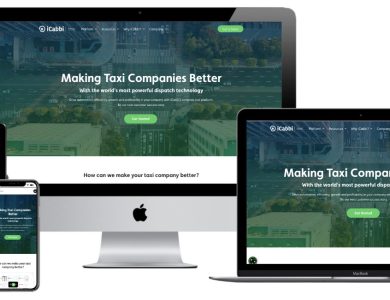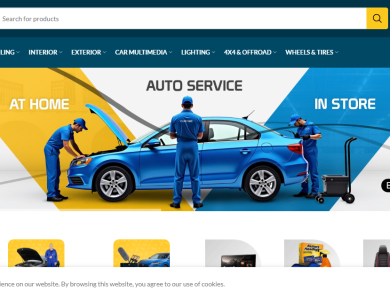
Website Development Best Practices for a Seamless User Experience
Website Development Best Practices for a Seamless User Experience
In today’s digital age, having a well-designed and functional website is essential for businesses and organizations looking to engage their audience, build trust, and convert visitors into customers. Website development best practices play a critical role in ensuring that users have a seamless and positive experience while navigating your site. A website’s design, layout, performance, and usability all directly impact how users perceive your brand. To create an efficient website that delivers an excellent user experience (UX), web developers must follow certain best practices. This article will delve into the key aspects of website development that contribute to a seamless user experience.
1. Mobile Responsiveness
With mobile internet usage surpassing desktop usage, mobile responsiveness is no longer optional; it’s a necessity. Websites must adapt to a variety of screen sizes, from smartphones to tablets, to provide a consistent user experience across devices. When developing a website, it’s important to use responsive design techniques that adjust the layout and content depending on the screen size.
Why is mobile responsiveness crucial?
- Google ranking: Google prioritizes mobile-friendly websites in search results, which can directly impact your site’s SEO performance.
- Improved accessibility: A responsive website makes it easier for users to interact with your site on any device without frustration.
- Higher conversion rates: Mobile-optimized websites tend to have lower bounce rates and higher conversion rates, as users can easily complete their tasks on any device.
2. Fast Loading Speed
A slow website can frustrate users and drive them away, even before they have a chance to explore your content. In fact, studies show that nearly 40% of users will abandon a website if it takes more than 3 seconds to load. Website performance, especially loading speed, is one of the most important factors in creating a seamless user experience.
How to improve loading speed:
- Optimize images: Compress images without losing quality to reduce load times.
- Minimize HTTP requests: Reduce the number of elements that need to be loaded on the page, such as scripts, styles, and images.
- Leverage browser caching: Store static files in users’ browsers to reduce load time on subsequent visits.
- Use a content delivery network (CDN): CDNs store your content on multiple servers around the world, reducing the time it takes for users to access your site.
3. Simple and Intuitive Navigation
Website navigation should be straightforward and intuitive, helping users find the information they need with minimal effort. A cluttered or complex navigation structure can confuse users, leading them to abandon the site. A clear, well-organized menu, along with an easy-to-find search bar, makes for a smooth navigation experience.
Best practices for navigation design:
- Limit menu options: Keep the number of top-level navigation items to a minimum, ensuring that the most important pages are easy to find.
- Use a sticky navigation bar: A sticky navigation bar that stays visible as users scroll through the page ensures easy access to other sections of the site.
- Use breadcrumbs: Breadcrumbs help users understand their location within the website’s hierarchy and navigate back to previous pages effortlessly.
- Search functionality: A prominent search bar can enhance usability, allowing users to quickly find specific content.
4. Clear and Consistent Call-to-Actions (CTAs)
A call-to-action (CTA) is a prompt that encourages users to take a specific action, such as signing up for a newsletter, making a purchase, or downloading an e-book. Well-designed CTAs are crucial for guiding users toward the desired outcome.
Tips for effective CTAs:
- Visibility: Ensure CTAs are placed prominently throughout the website, particularly on landing pages or at key decision-making points.
- Action-oriented language: Use clear and compelling language that motivates users to take action (e.g., “Sign up now,” “Get started,” or “Learn more”).
- Consistency: Maintain consistency in design and placement across the site to avoid confusion. All CTAs should stand out visually and use similar language.
- Use contrast: Make sure the CTA buttons stand out against the background to grab users’ attention.
5. Optimized User Interface (UI) Design
User interface (UI) design is another key component in creating a seamless user experience. A well-designed UI ensures that users can easily interact with the website and find the information they need.
Elements of a good UI design include:
- Minimalistic design: Keep the design simple and clean by focusing on essential elements and avoiding unnecessary clutter.
- Readable typography: Use legible fonts and maintain proper contrast between text and background to ensure readability on all devices.
- Clear visual hierarchy: Use headings, subheadings, and font size to differentiate between content and guide users through the website.
- Interactive elements: Design buttons, forms, and links to be easily clickable, with hover effects that provide visual feedback.
6. Accessible Design
Ensuring your website is accessible to all users, including those with disabilities, is not only the right thing to do but also a legal requirement in many countries. Accessibility best practices aim to make your website usable for people with visual, auditory, motor, and cognitive impairments.
Ways to make your website more accessible:
- Provide text alternatives for images: Use alt text to describe images for screen readers.
- Color contrast: Ensure sufficient contrast between text and background colors to assist users with visual impairments.
- Keyboard navigation: Make sure all interactive elements can be navigated using only a keyboard for users with motor disabilities.
- Accessible forms: Label form fields clearly and ensure they are easy to complete with error messages that are easy to understand.
7. Search Engine Optimization (SEO) Best Practices
A seamless user experience goes beyond the design of your website. It also includes how easy it is for users to find your site in the first place. SEO best practices help ensure your site ranks well in search engine results, improving your visibility and driving more organic traffic.
SEO best practices to follow:
- Keyword optimization: Use relevant keywords in titles, headers, meta descriptions, and throughout the content to improve search engine ranking.
- Optimize URLs: Use clean, descriptive URLs that are easy for both users and search engines to understand.
- Internal linking: Use internal links to help users navigate to related content and keep them engaged longer.
- Quality content: Regularly update your site with fresh, valuable content that is relevant to your audience.
8. Security Features
Security is an essential aspect of any website development project. A secure website not only protects your business and users’ data but also helps build trust with your audience. If users feel that their personal information is at risk, they are unlikely to engage with your site.
How to ensure website security:
- Use HTTPS: Secure your website with an SSL certificate to ensure that data transmitted between the server and users is encrypted.
- Regularly update software: Keep your website’s platform, plugins, and scripts up to date to patch vulnerabilities.
- Use strong passwords: Ensure that strong, unique passwords are used for any admin panels or content management systems (CMS).
9. Regular Testing and Analytics
To maintain a seamless user experience, it’s essential to regularly test your website for performance issues, bugs, and usability concerns. In addition, leveraging website analytics tools will help you understand how users interact with your site and where improvements are needed.
Testing and monitoring best practices:
- A/B testing: Run A/B tests on key pages to understand what design or content resonates best with users.
- Monitor user behavior: Use analytics tools like Google Analytics to track user behavior, bounce rates, and conversion rates.
- Usability testing: Conduct regular usability tests with real users to identify areas for improvement.
Conclusion
Implementing website development best practices is essential to creating a seamless user experience that enhances engagement, boosts conversions, and fosters long-term customer loyalty. From ensuring mobile responsiveness and fast load times to optimizing navigation, accessibility, and security, following these guidelines will help you build a website that not only meets but exceeds user expectations. By continually testing and improving your website, you can keep your digital presence strong, user-friendly, and competitive in the ever-evolving online landscape.
More: Podiatric Approaches For Treating Achilles Tendon Injuries



